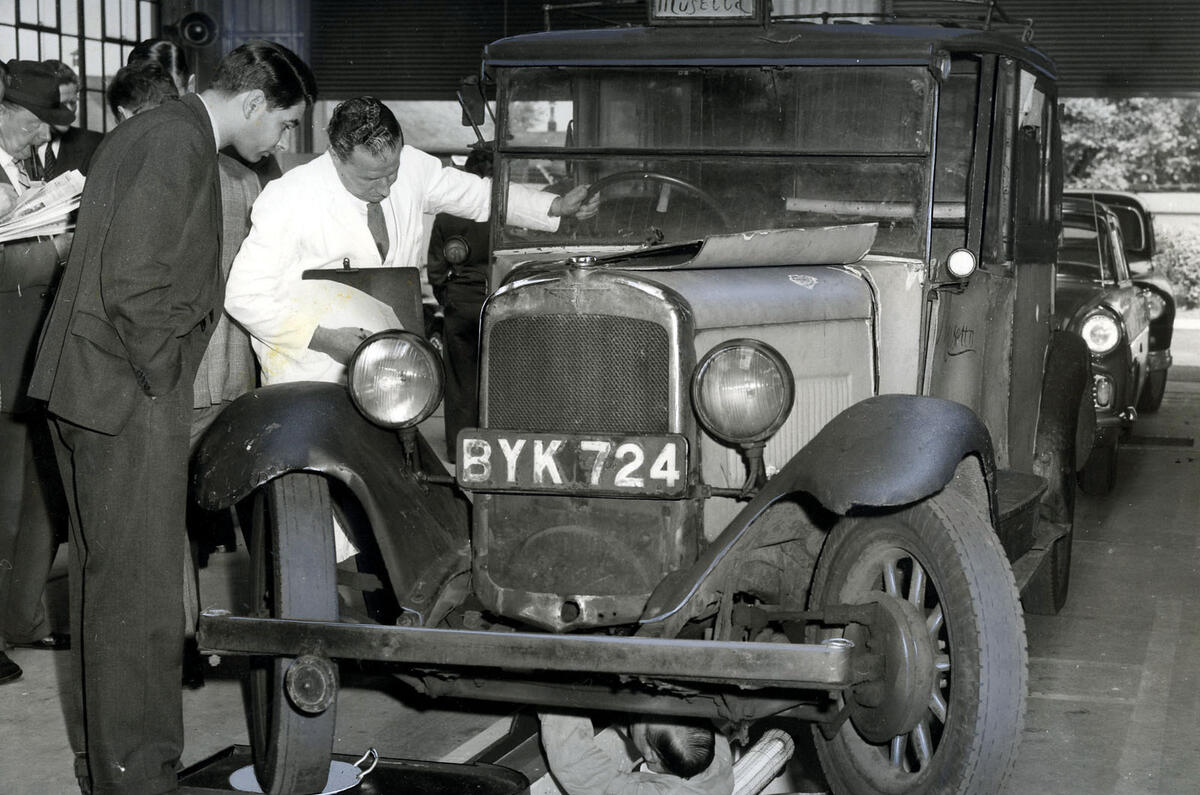The ‘Ministry of Transport’ hasn’t existed since it was merged with the Department for the Environment in 1970, re-emerging as the Department of Transport in 1976, but that hasn’t prevented the majority of us from continuing to refer to ‘the MOT test’.
The testing scheme was established by the ministry in 1960 to offer a quick and cheap way of finding out whether the brakes, steering and lights of a vehicle were in order or in need of adjustment.
On Monday 12 September of that year, “the official scheme for testing cars, motorcycles, smaller goods vehicles and hackney carriages came into force when 12,500 garages throughout the country began to operate the scheme,” Autocar wrote at the time.
Initially, the test was referred to as the ‘10-year test’, because it was aimed at the large number of vehicles of that age on Britain’s roads, thought to number more than 1.5 million at the time.
The test was obligatory for vehicles that had been registered more than 10 years ago. However, Autocar reported: “It is hoped that vehicles which are less than 10 years old will also be submitted for examination. In time the scheme will be extended to younger vehicles.”
The fee for a test was 15 shillings (75 pence) for cars, including one shilling for a pass certificate, which was not charged if the vehicle failed the test. A retest at a reduced fee was made if, within 14 days of failure, the car was taken for test after repair, or submitted to an authorised examiner for repair and retest.
Autocar tried to dispel concerns that this was a government tactic to rid the roads of ageing vehicles: “Requirements of the test are not new or onerous, and any vehicle that has been properly constructed and reasonably maintained should pass without difficulty. It is not the purpose of the test to drive older vehicles off the roads simply because of their age; if they fail the test it will be because they are not roadworthy – and in many cases actually unsafe.
“The test is concerned only with brakes, steering gear, lighting equipment and reflectors; defects in other respects will not disqualify unless they have a direct effect on brakes or steering, or unless the tester feels they involve risk of accident or damage in driving the vehicle.”
Although most testing stations were at commercial garages, the Ministry of Transport had its own testing station at Hendon, north London, and about 70 others were run by municipalities.
Even from the start, though, there were plans afoot to increase the scope and rigour of the test. Autocar wrote: “In due course, issue of a licence to a vehicle 10 or more years old will be made conditional on production of a test certificate. If at the appropriate time a car is not licensed, the owner will be enabled to take his vehicle over public roads for test at a station, within a reasonable distance, at which an appointment has been made.”




Add your comment